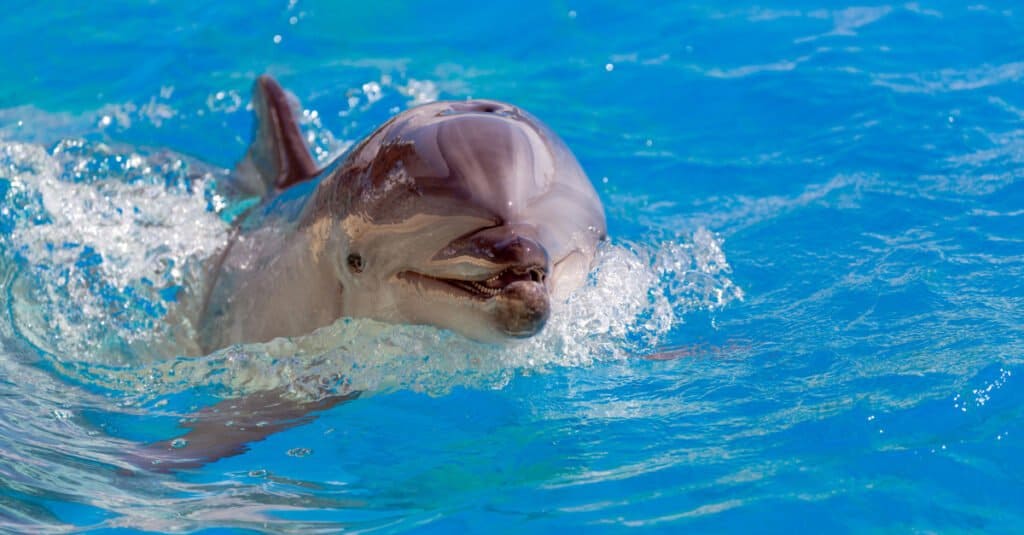
Known for their playfulness and intelligence, dolphins live a very interesting life. But how long do dolphins live on average, and what types of dolphins live the longest? Their lifespan varies depending on age and species, but they enjoy life to the fullest.
In this article, we will discuss some of the longest living dolphins and what their lifespan looks like. We will also talk about the average dolphin life cycle, from birth to old age. Finally, we will discuss some of the oldest living dolphins known to us today. Let’s get started!
How Long Do Dolphins Live?
Dolphins live an average of 10-20 years in the wild, though they are thought to live much longer in captivity. The average lifespan of a dolphin also depends greatly on the species. For example, bottlenose dolphins live closer to 15 years in the wild on average, while orcas live closer to ten.

Wild dolphins have very complex lives. They travel nearly 100 miles per day in their pod, and these pods are made up of dozens of dolphins. They travel in larger groups to protect themselves from predators and other enemies, such as sharks.
For the most part however, dolphins are at the top of their food chain in the ocean. They consume fish daily, and communicate with one another using a variety of clicks and whistles, along with echolocation. Dolphins are known for being extremely intelligent, especially in regards to their social communication and understanding.
The Average Dolphin Life Cycle
You may be surprised to learn about what life is like for a dolphin as a young calf, and even how things progress for them as they age. Whether they are in the wild or born in captivity, dolphins have a very similar life cycle. Let’s dive in.

Newborn, or Calf
It takes a mother dolphin 12 months before her calf will be born. Dolphins know how to swim immediately after being born, as they are born in the water and live in the water full time. A baby dolphin or calf will need to feed extensively during its first week of life, often needing its mother’s milk two to four times an hour.
Young dolphins are taught to swim behind their mother so that they can take advantage of slipstreams in the water. This helps them learn how to become strong swimmers without slowing the rest of the pod down. They will need nutrition from their mother for the first full year of their life, if not longer.

Adolescent Dolphin
Despite still needing nutrition from their mother’s milk, most dolphins begin to eat crustaceans and other fish starting around the age of 6 months. However, once they approach a year of age, they are playful, strong swimmers, and proper members of their pod.
Dolphins take significantly longer to reach sexual maturity than many other species. It can take the average dolphin 5 to 10 years to reach sexual maturity, with female dolphins maturing faster than male dolphins.
Adolescent dolphins will continue to grow until they reach sexual maturity, and by that point they will be their full size. The average dolphin in the wild grows to be anywhere between 7 to 8 feet in length and over 300 pounds!

Adult Dolphin
Adult dolphins are polyamorous, meaning they don’t mate for life. They are also one of the few animals that mate for fun, not just for species reproduction. Adult bottlenose dolphins swim an average of 2 miles per hour, unless they are hunting or otherwise swimming quickly. Then, they are capable of reaching speeds in excess of 30 miles per hour.
Many adult dolphins live to see the age of 7 to 10 years old. However, fishing is a huge threat to wild dolphins, and there is much debate as to whether or not captivity is good for dolphins. They are extremely social, and denying them their natural pod or family situation can potentially be harmful for their health.



